A-to-Z Stormwater Management and Infiltration Solution for a Key Railway Investment in Poland
More than 370 kilometers of railways were built or modernized in Poland last year alone, bringing the country’s already developed transport infrastructure to the next level. Several of these recent investments have benefited from Pipelife’s expertise in road drainage and stormwater management solutions, and railway line No. 7 in the Warsaw metropolitan area is one of the latest such projects.
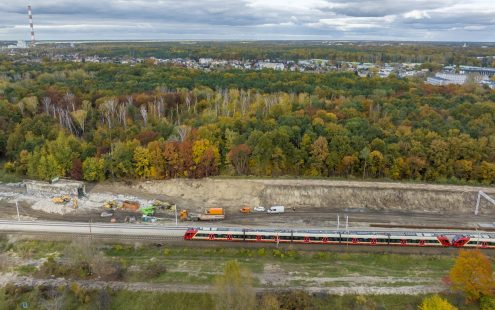.jpg)
Modernizing a Railway of International Importance
Railway line No. 7, commonly abbreviated as LK7, connects Warsaw with Lublin and further leads to the town of Dorohusk on the border with Ukraine, making it a route of national and international importance. While nowadays, most of LK7 is double-track and electrified, the technical condition of the line no longer meets the growing demand for its use, limiting the maximum speed and number of trains passing daily.
The much-awaited modernization of the line started in 2022 and will be carried out in several stages. The first one covers LK7’s busiest section, connecting Warsaw East and Otwock stations. The large-scale project involves the reconstruction of the route’s substructure, platforms, road systems, station buildings and utility networks. Furthermore, two new tracks were laid last year, increasing the network’s capacity and allowing for separation between suburban services and long-distance traffic.
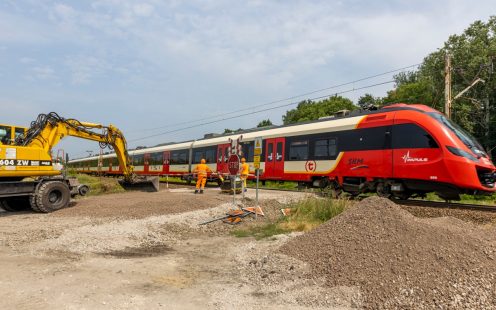.jpg)
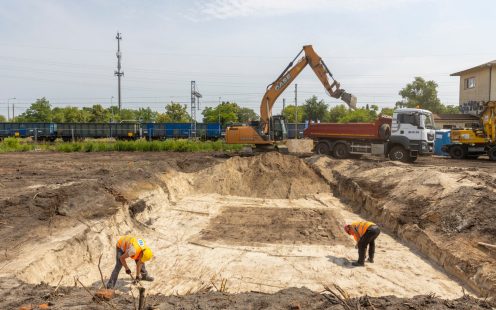.jpg)
High-Capacity Drainage Network for Safe Train Traffic
Unsatisfactory drainage capacity has been one of the major impediments to the further expansion of LK7. Throughout the route, there are no drainage systems in place for rainwater or snow melt, alongside a lack of naturally occurring water collection points. The existing combined sewage system in the area could not meet the discharge minimum of 1 L/s — necessary to safely handle the excess rainwater for a high-speed railway.
Pipelife Poland designed an end-to-end drainage and stormwater infiltration system addressing these challenges and presented it to the Polish State Railways. Our proposal of installing multiple underground rainwater retention and infiltration systems on nearby plots of land that run adjacent to the rail line, along with a network of stormwater infiltration pipe systems was selected as the best solution by the investor.
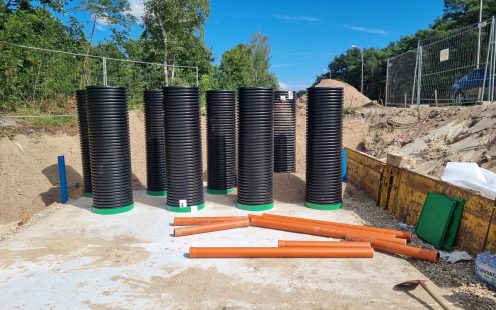.jpg)
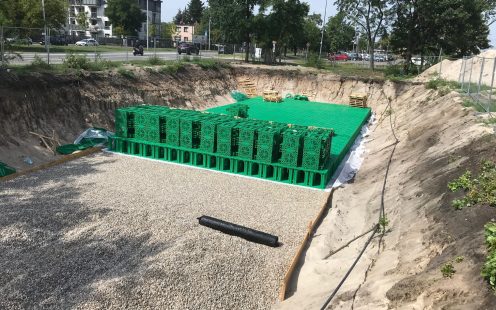.jpg)
Complete Railway Drainage and Infiltration Solution
In total, Pipelife Poland supplied the project with 2,287 attenuation crates for the construction of 17 rainwater collection areas with a total capacity of 980 m3. An additional 1,100 m of geotextile-covered PP pipes were supplied to build 12 stormwater infiltration pipe systems, providing a further 320 m3 of potential rainwater retention. Pipelife also supplied the necessary drainage pipes, connections and wells to complete the network.
The nearby soakaway areas will secure the railway against flooding by storing excess rainwater and snowmelt before slowly infiltrating it back into the soil. Alternatively, the stormwater infiltration pipe systems will allow for the controlled infiltration of water as it travels through the pipe. This solution was selected for areas where the space required for a tank was limited or where the ground conditions allowed for controlled infiltration throughout the area as opposed to transporting the water several kilometers to the nearest reservoir.
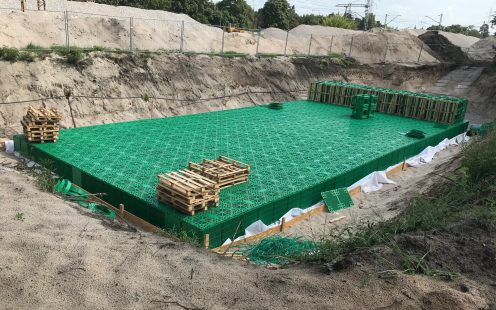.jpg)
Building the Future of Commuting
The modernization of the 22-km section is being carried out by the general contractor Trakcja S. A. while MGGP Group S. A. was responsible for project design and preparation. Pipelife Poland has been working closely with both parties involved in the project, preparing the drawings and providing consultations and product training. The installation of drainage and infiltration systems started in July 2022 and is expected to be completed later this year.
The project’s estimated costs are PLN 422 million (EUR 90 million); it was financed with the support of the EU’s Operational Program Infrastructure and Environment.
The modernization of LK7 serves as an example of the positive impact of rail infrastructure investments, reducing travel times and environmental impacts while providing new development opportunities for the region. The next modernization stage of the route is expected to start in a few years.
Discover our stormwater management solutions
Get in Touch
Please choose your preferred way to get in contact with us. We will get back to you as soon as possible.
Fill our form